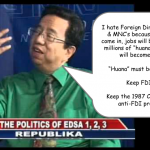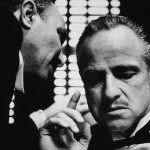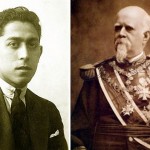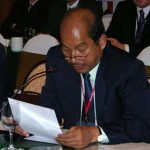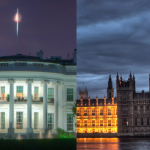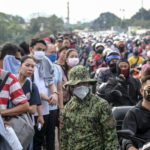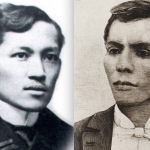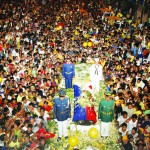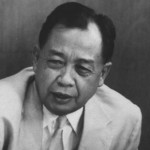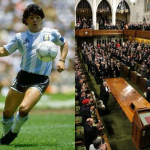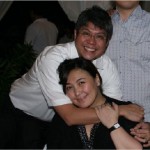

(This essay was written more than a decade ago when Florencio “Butch” Abad was a Congressional Representative for his home province of Batanes, long before he became Budget Secretary in the current administration of Noynoy Aquino. As everyone can see, Florencio “Butch” Abad may seem to be silent about his pro-Constitutional Reform stand but in reality, his views are extremely strongly supportive of it. This essay was well-researched and extremely informative.)
Should the Philippines Turn Parliamentary?
BY REP. FLORENCIO B. ABAD
It is unfortunate that enlightened debate about the proposed shift in the form of government has been hampered by allegations of hidden motives by Senate leaders and by a public suspicious of an unspoken agenda of certain politicians. The senators fear that the proposal is a means to cut short their political careers. The public, in turn, suspects that the plan has been advanced to secure the political futures of those who hold higher political ambitions, as well as to prolong the careers of those affected by the term limits set by the Constitution.
These reservations are not baseless nor unfair, given the embarrassing way patronage, narrow and self-interested politics have dominated the political way of life of the country. And while President Ramos has openly declared that any consideration of a change in government should not result in an extension of his term of office, his assurances have not prevented influential sectors of society,prominently the media and the business sectors, from calling for the abandonment of the effort. They instead urge more attention to the critical task of economic recovery and development. For a populace tired of the wrangling and positioning of politicians, the call to focus on pressing economic problems is widespread. Unfortunately, the appeal is premised on the erroneous assumption that rebuilding the economy can proceed without reforming political institutions and political markets.
The premise here is that the genuine democracy is founded not only on social and economic conditions, but also on the design of political institutions. The Philippines, or any other country similarly going through a difficult phase of transition, will be unable to cope without effective political institutions.
Strong political institutions make for effective governance. They do not guarantee the best policies,but they do ensure that the government will be able to make policies of some kind and that it will not be mired in endless standoffs. Research on the relationship between economic reform and democracy has shown that the strong political institutions are vital to accomplishing economic reform. While the socio-cultural and economic policy challenges faced by new democracies are important, these challenges cannot be met without strong political institutions.For these reasons, informed debate and research on constitutional reforms is important.The principal question that will be addressed is this: “Why is a parliamentary system a more appropriate framework of government, compared to a presidential system, in improving the capacity of government to function more effectively and in facilitating the consolidation of democracy in the Philippines?”
Three important assumptions in this question ought to be clarified:
First, despite the proliferation of non-governmental development institutions and the insistence of the business sector on a market-determined growth strategy, government will continue to play a central and dominant role in the development of the country.With an underdeveloped legislature, the initiative for policy making will have to emanate from the executive. With a limited manufacturing and industrial base, government will have to provide the infrastructure, the environment, and the push for economic recovery and growth.In our fractured and divided society, government must play a delicate mediating role in forging compromise and peace in the country.
Second, the government will have to function effectively to carry out these crucial roles. In the past,successive governments have been criticized — with good reason-for inefficiency, for lacking both economic an political competency, and, more importantly, for being unable to govern outside narrow political and economic interests.
Effectiveness can refer to a range of competencies. These capabilities will be defined and limited in the context of institutional reforms necessary to strengthen and consolidate our fragile democracy.
Consolidation refers to the process by which democracy becomes so broadly and profoundly legitimate among its citizens that it is unlikely to break down. It involves behavioral and institutional changes that normalize democratic politics and narrow its uncertainty (even to the point of rendering it rather boring). Consolidation involves the development of appropriate institutions so that democratic norms and practices take hold in the country.
Other questions also come to mind about the relationship between government structure and effective governance: Will the change in the system of government instantly bring about the capabilities that will enhance government effectiveness? If not, what other factors or influences will have to be considered?
This chapter has benefited immensely from a growing literature on the impact of institutions on promoting democratic consolidation and in enhancing effective governance. Interest has been focused particularly on the growing debate about the appropriateness of a presidential or a parliamentary system — or a hybrid of either – in new democracies. The writer has studied the experience of Latin American presidential democracies to prove a hypothesis: that the basic deficiencies of the presidential system that are not culture-bound and peculiar to the Philippines are, in fact, inherent in the system of government itself.
These are three reasons for focusing on Latin America first, countries in that region have had a long experience with democratic presidential systems. This is particularly true for those, which obtained their independence from Spain and Portugal early in the nineteenth century. In fact, in Latin America one finds the greatest concentration of US-style presidential democracies.
Finally, and most important, there has been a similar process of debate has taken place in the region about the wisdom of shifting to a parliamentary system or adopting applicable features of it within a semi-presidential framework.
The writer has also looked into the performance of democratic parliamentary regimes in Western Europe, particularly Britain, France, and Germany, where the parliamentary tradition is deeply rooted. To eliminate the possibility that economic growth and development would independently influence political stability, the writer has also looked into the experience of parliamentary systems in certain developing countries in the Caribbean and in Africa.
Before proceeding further, there is a need to briefly establish the debate in the context of the history of constitutional reform in the Philippines.
I. Historical Context of the Debate
Many of the proponents of the presidential system argue as if the system of parliamentary government is totally alien to the process of constitutional formation and the reform in the Philippines. Far from it.
In fact, in past exercises in constitution making — the Constitution of Biak-na-Bato of 1897, the Constitution of Makabulos, the Malolos Constitution, the Commonwealth Constitution of 1935 and the martial law-disrupted Constitutional Convention of 1971 — the issue of a parliamentary versus presidential structure of government has been at the heart of the deliberations.
THE 1898 PHILIPPINE REVOLUTION
At the turn of the century, Filipino revolutionaries were at the point of driving the Spanish colonizers out of the islands and establishing an independent republic. At that stage, the revolutionaries were contemplating the adoption of a constitution that had the main features of a parliamentary form of government. They drew their ideas of government from English and European sources, the Malolos Constitution, the Constitutions of Biak-na-bato and Makabulos, as well as the constitutional plans prepared by Apolinario Mabini and Mariano Ponce. The Revolutionaries envisioned a constitution that made the legislature the dominant department of government, with the executive powers vested in a President elected by a majority of the assembly of representatives.
Along with the revolutionaries’ struggle for genuine independence, this desire for a parliamentary structure of government ended in December 1898 when the Philippines was formally ceded by Spain to the United States. To justify its colonization of the islands, the US government issued the”Proclamation of Benevolent Assimilation” after a bloody “pacification” campaign. This began the process of implanting American political institutions in its new colony.
THE 1935 CONSTITUTION
Even then, until the adoption of the 1935 Constitution, features of parliamentary system were incorporated into a civil government, called the Philippine Commission, which had been established by the US. The Commission exercised both legislative and executive functions, as a result, were also legislators in a unicameral law-making assembly.After the passage of the Philippine Bill of 1902, however, a bicameral legislature was created, with the Commission as the upper chamber and a newly-instituted Philippine Assembly as the lower chamber. The Jones Law of 1916 put an end to this arrangement and vested legislative power in an all-Filipino bicameral legislature with the Senate as the upper chamber and the House of Representatives as the lower chamber. But the members of the legislature continued to be appointed as heads of executive departments and sat in the Cabinet.
The semi-parliamentary features of government persisted until 1935, when, by virtue of the Tydings-McDuffie Law, also called the Philippine Independence Act, a new constitution was adopted. The 1935 Constitution was patterned after the US system and created a powerful executive, the presidency, in which executive power was solely vested. The President served for a fixed term of four years with only one reelection.
THE 1971 CONSTITUTIONAL CONVENTION
The presidential system characterized the system of government until 1972. A year later earlier, in1971, amidst a climate of protest and political instability, an elected Constitutional Convention convened to draw up a new constitution. Once again, a re-examination of governmental structure was in the agenda of the Convention.
On September 21, 1972, however, before the Convention could complete its task, President Ferdinand Marcos declared martial law, assumed extraordinary powers and began 14 years of profligate and repressive dictatorial rule. Despite the tense atmosphere and volatile political situation, the Convention continued with its deliberations.
To circumvent a constitutional ban on a second reelection, Marcos and his followers — employing a combination of bribes, intimidation and arrests – manipulated the Convention to scrap presidential system and replace it with a French-inspired semi-parliamentary government. But it was only in1978 when Marcos was finally able to convene an interim Batasang Pambansa(National Assembly). After the 1984 legislative elections, the Assembly attained regular status. The Assembly was generally perceived as a rubberstamp and a farce, as Marcos continued to exercise legislative powers under Amendment No. 6 of the 1973 Constitution. In fact, during martial rule, Marcos issued more decrees that the Assembly passed laws. Proponents of presidentialism who refer to this anomalous and undemocratic period of governance “as our bad experience in parliamentary government” to discredit the parliamentary system are grossly mistaken.
After a decade-and-a-half of forced rule, Filipinos finally mustered enough collective courage to shout, “Tama Na! Sobra Na!” (“Stop! Enough”) and marched in the millions in a non-violent show of defiance against the Marcos regime.
The People Power Revolution of 1986
The unprecedented People Power Revolution in February 1986 ousted Marcos and installed Corazon C. Aquino in power, it also created another opportunity for constitutional innovations and reforms. On May 1987, President Corazon Aquino convened an appointed Constitutional Commission to draft a new constitution to replace her “Freedom Constitution” under which she ruled with an extraordinary powers.
But as the eminent constitutionalist and Commissioner member, Rev. Fr. Joaquin Bernas, S.J., observed. “The year 1986, when emotions were high and a major preoccupation was how to ensure in the speediest way possible the restoration of the democratic processes, was not the best time to engage in protracted debates, especially about fundamental government structure.” Seven years after the 1987 Constitution was ratified, formal structures of democracy have been restored and the highly unstable political situation has settled down considerably.
Filipinos have had enough experience with, and learned enough lessons from, the new constitution. For many, it is time to take a second look at the fundamental law of the land. The initiation of debates on the appropriate governmental structure is an important phase of this process.Before comparing the two systems according to their capacity To promote effective governance and to facilitate the consolidation of democracy, a review of the basic characteristics of the two systems is in order.
II. Presidential vs. Parliamentary: Essential Differences
The central difference between a parliamentary and a presidential system lies in the relationship between the executive and legislative branches.
PRINCIPAL DIFFERENCE
In a presidential or separation of powers system, the chief executive, or the president, is elected for a fixed, constitutionally prescribed term. He or she cannot be forced by the legislature to resign,except for cause through the highly unusual and exceptional process of impeachment.Being directly elected by the people, the president has full claim to democratic legitimacy. The legislature is an assembly of elected representatives similarly enjoying fixed and constitutionally prescribed terms. As such, it cannot be dissolved by the president and possesses as much democratic legitimacy as the executive. Because of this essential characteristics, Linz has described the presidential regime as a system of “Dual democratic legitimacy” to emphasize the autonomy and co -equal position of the executive and legislative branches of government. Similarly, Stepan and Skach have called the presidential regime a system of “mutual independence”.
In a parliamentary system, the head of government, the prime minister, is chosen from within the ranks of the legislature. He or she must, therefore, be supported by, and is dependent upon, the confidence of the legislature. The prime minister can fall and be dismissed from office by the legislature’s vote of no-confidence. On the other hand, he or she (normally in conjunction with the head of state) has the power to dissolve the legislature and call for new elections. Because of the need for close collaboration between the executive and the legislature for their mutual survival, Stepan and Skach have referred to parliamentary democracy as a system of “mutual dependence”.
OTHER BASIC DIFFERENCES
Apart from this basic difference in the relationship between the executive and the legislature, there are other important differences:
1. In a parliamentary system, the executive is divided into a prime minister, who is the head of government, and a monarch or president , who acts as head of state. Unlike a prime minister, a president or monarch has fewer powers and plays an important role as an “above-politics” leader. He or she also plays a stabilizing and mediating role,especially in times of crisis. In a presidential system, on the other hand, the executive is undivided: the head of the government is also the head of the state.
2. In a parliamentary government, the prime minister appoints the ministers, but because the government is a collegial body, he or she is merely primus inter pares or is regarded as a “first among equals.” In a presidential government, on the other hand, the president is one-person executive. He or she also appoints the heads of departments, but they are his or her subordinates or alter egos.
3. While ministers are drawn from the elected members of the legislature in a parliamentary system, department heads in a presidential system are constitutionally banned from becoming members of the legislature and vice versa.
4. The president, unlike a prime minister, is not responsible to the assembly; instead, he is ultimately responsible to the constitution by the process of impeachment.
5. The legislature, in a presidential government, is ultimately supreme over the other branches of government. It approves the appropriation of government, may impeach the president if the latter behaves unconstitutionally and, in the event of conflict with the judiciary, may assert its will since it has the right to amend the constitution.In a parliamentary system, the government and the assembly cannot dominate each other. The government depends upon the support of the assembly to stay in power,but if the government chooses, it may dissolve the parliament.
6. The presidential executive, being directly elected by the whole body of electors, is directly responsible to the electorate. The parliamentary government, while being directly responsible to the assembly, is only indirectly responsible to the electorate.
7. Finally in a parliamentary system, the focus of power in the political system is the parliament. In a presidential government, there is no focus of power since power is diffused in the three co-equal and coordinate branches of government: the executive,the legislative and the judiciary.
It is important to remember that these basic features are more than categories. They are also defining and constraining conditions within which the vast majority of developing democracies must somehow work out substantial socio-economic reforms and develop their democratic institutions.
PARLIAMENTARY VS. PRESIDENTIAL: COMPARATIVE ANALYSIS
In attempting to answer the question, “Why is a parliamentary system a more appropriate framework of government, compared to a presidential system, in improving the capacity of government to function more effectively and in facilitating the consolidation of democracy?” As bases for comparison, five capacities that are necessary for effective governance in the Philippines will be used.
These are the capacities to:
(1) prevent gridlock and promote consensus in governance,
(2) ensure stability and continuity in governance,
(3) strengthen accountability in governance,
(4) promote cohesive and disciplined political parties, and
(5) promote a broader based and inclusive politics through a multi-party system.
For sure, this is not an exhaustive list of capabilities. Limitations of time and space only permit a selection from a broad range of possible capabilities, which are critical at this stage of the country’s development. Considerable weight is placed on the values and capabilities that Filipinos would like to see characterize their government and which lie at the heart of their dissatisfaction with the presidential system. The most bewailed feature of the presidential system is a good starting point.
1. CAPACITY TO PREVENT GRIDLOCK AND PROMOTE CONSENSUS
The chronic problem of gridlock that has afflicted the Philippine presidential system with its cumbersome process of checks and balances has earned a bad name for politicians and political institutions. Evidence of this poor credibility is the consistently low ratings that political personalities and institutions, like Congress and political parties, register in surveys. Respondents invariably point to their frustration over the seemingly endless political squabbling among legislators and between government and Congress on almost any major policy issue that comes up for deliberation.
Proponents of the shift to a parliamentary system have repeatedly hammered on this problem of “wasteful and time consuming” stalemates to justify the change. Validly they point out that these crippling standoffs have prevented the country from responding in an efficient and timely manner to the many challenges and opportunities it faces as it struggles to catch up with the rest of the advancing economies in Southeast Asia. The criticism hits an issue that fundamentally distinguishes the parliamentary and the presidential systems: the relationship between the executive and the legislature.
Linz attributes this problem to an inherent structural weakness in a presidential system: the tenure of the president is fixed independent of the legislature and the legislature can survive without fear of the dissolution by the executive. This feature derives from the separate but co-existing democratic legitimacy enjoyed by the executive and the legislative branches, being both directly and popularly elected.
Lijphart goes along with this view, but at the same time holds that this is only part of the explanation. For him, “the real problem is that everyone — including the president, the public at large, and even political scientists – feels that the president’s claim (to legitimacy) is much stronger than the legislature’s. Consequently, the feeling of superior democratic legitimacy may make the president righteously unwilling and psychologically unable to compromise.”
This problem is aggravated by the inability of presidential democracies to obtain strong congressional cooperation through majority control of the legislature. As a result, the legislature rests in the control of politicians who represent a constituency with a different political choice from rests in the control of politicians who represent a constituency with a different political choice from that of the constituency that supports the president.
Stepan and Skach confirm this propensity of presidential governments to rule with legislative minorities in a study of all non-Organization of Economic Cooperation and Development (OECD) countries that qualified as democracies for at least one year during the 1973 -1987 period.
The OECD countries were excluded to neutralize the effect of economic development as an intervening variable that might independently influence political stability. The findings show that in presidential democracies, the executive’s party enjoyed a legislative majority less than half of the time (48% of the democratic years), while in parliamentary democracies – in sharp contrast – the government was in control of the legislature at 83% of the time.” (See Table 1)
The inability of the executive, in a presidential system, to gain congressional control has often led to basic differences in policy positions. These conflicts then degenerate into a prolonged and unproductive impasse. In such a situation, the inevitable question arises: Who, on the basis of democratic principle to resolve this question.
Repeatedly faced with these stalemates and the expectation of their inevitability, presidents have learned to cope with them and have accepted that it is to their interest – and perhaps survival – to adopt “anti-party” practices to secure approval of their policies. In the Philippines, this practice has institutionalized the much detested, yet enduring practice of “pork barrel” politics and the ritual of party-raiding and party-switching that predictably follows every presidential elections.
David Wurfel blames this habitual practice of “turncoatism” to the primary preoccupation of legislators with their re-election. Recognizing the president’s almost absolute discretion in the release and transfer of funds to build schools, bridges, roads and other infrastructures, legislators find various ways – including changing party loyalties – to endear themselves to the president.The case of the 1992 Philippine Congress is no exception. At the time of the proclamation of congressional winners in 1992, the party of the administration, Lakas-NUCD, was a minority in the House of Representatives with only 39 out of 200 seats, or around 20%. The rest of the seats were spread out to seven other parties, with the Laban ng Demokratikong Pilipino (LDP), the National People’s Coalition (NPC) and the Liberal Party controlling the majority of the seats with 87, 39 and 13 members respectively.
After a year of intensive recruitment by the administration, Lakas-NUCD gained 69 more seats to control the lower house with 108 seats, while the LDP was reduced to less than a third with only 25 seats. The ordinary voter has come to accept the proliferation of “political butterflies” as a justifiable act of political survival in a system that rewards, not party loyalty, but a politician’s ability to ingratiate himself to an all-powerful, spoils-dispensing president.
In a number of developing countries, when the legislature is intransigent and refuses to compromise or bow down to political pressure and a serious crisis threatens to embroil the country,the administration – stalemated, powerless and deeply frustrated – is often left with no other choice but to resort to extra-constitutional measures. Martial law, or rule by decree, becomes an option.The case of Alberto Fujimori in Peru comes to mind. Fujimori, to justify martial rule and ruling by decree on April 1992, blamed the lack of progress in Peru squarely on uncooperative congress. In1972, Marcos used the same excuse for closing down Congress and imposing “constitutional authoritarianism” in the Philippines.
The reverse may also be the case. When an unpopular and discredited president refuses to resign and civilian authorities are unable to resolve the standoff, the military exploits the situation and takes over from the civilian authorities. The two coup attempts in 1992 that ultimately led to the ouster of President Carlos Andrés Pérez of Venezuela prove this point.
In the same manner, in 1986, the attempted coup by the Reform the Armed Forces Movement (RAM) ignited the popular uprising that eventually ousted Marcos. But perhaps nowhere was this more flagrant than in the case of Ecuador. In the period 1931-1988, 13 presidential governments were forced to resign, seven were overthrown, one was impeached, while only 12 completed their terms.
Under the parliamentary system, the powerlessness and deep frustration that generally characterize presidential government is more exception than the rule. The difference lies in the ability of the parliamentary government to muster a majority in the legislature and command support and cooperation from it. More important, the mutual dependency relation in parliamentarism creates effective constitutional devices to break deadlocks or remove inefficient governments. Frustrating, unproductive and long impasses are thus avoided. Thus, as a system that can better avoid deadlocks, discourage coup attempts and promote better cooperation in policymaking, a parliamentary democracy is superior and should be preferred over a presidential system.
2. CAPACITY TO ENSURE STABILITY AND CONTINUITY IN GOVERNANCE
In arguing for the stability of the presidential system, critics of parliamentary democracy point tothe frequent crises and changes in the prime ministers in parliamentary democracies, such as the French Third and Fourth Republic, the frequent government turnovers in Italy and India today, and more recently, in Portugal.
While accepting the rigidity that presidentialism introduces into the political process, its proponents view this more as an advantage than a liability. This feature, they contend, reduces the uncertainties inherent in parliamentary democracies, where multiple political players can, at anytime between elections, effect basic changes, bring about realignment of forces and, above all, change the executive, the prime minister. Thus, in the critics’ view, the pinning for stability and predictability that normally accompany periods of transition and uncertainty seem to favor a presidential system.
But again it must be emphasized that presidents are elected for a period of time that, under normal circumstances cannot be modified: not shortened and sometimes, due to ban on reelections, not prolonged. The political process then becomes broken into discontinuous, rigidly determined periods without the possibility of continuous readjustments as political, social and economic events may require.
Thus, unexpected events may intervene, like fundamental flaws in judgment or political process. Does the system adjust better to crises? Most likely not, especially when the president is unyielding.There is the option of voluntary resignation through pressure from party leaders, the media and public opinion. But given the psychology of politicians, resignation is highly unlikely to happen.Moreover, the move will encounter opposition from the constituency that brought the discredited president to power.
Then there is the extreme measure of impeachment, which is difficult and complicated to execute successfully. Apart from the heavy burden of establishing sufficient evidence of misconduct, it also seems implausible that a legislative majority will support these proceedings, since members of the president’s party would have to go along with the impeachment process. Thus, it is almost impracticable to remove even the most corrupt and inefficient president from office.
The cases of Brazilian President Collor’s impeachment in 1992 on charges of widespread corruption in his government of the late U.S. President Richard Nixon’s resignation under threat of impeachment in 1973 in connection with the infamous Watergate wiretapping may defy this assertion, but these are clearly more the exception than the rule.
In sharp contrast, a parliamentary government – because of the mutual dependency between the executive and the legislature inherent in the system – permits flexibility in responding to changing situations and unexpected events. Proponents of presidentialism, in their critique of parliamentarism, overlook the “continuity of parties in power, the reshuffling of cabinet members,the continuation of a coalition under the same premier, and the frequent continuity of ministers in key ministries in spite of cabinet crises.
Moreover, it is also forgotten that the parliamentary system permits the removal of a prime minister who has lost party support or has been discredited and whose continuance in office may lead to serious political conflicts. Without engendering a serious constitutional crisis, the prime minister can be replaced in a variety of ways – by his or her party, by the formation of a new coalition, or by coalition partners withdrawing support of parties tolerating the minority government. Through these means, a new prime minister is bound to surface, perhaps with some difficulty and delay, but definitely with much greater certainty than had the crises taken place in a presidential democracy.
Thus, the problem that arises as a result of the so-called instability of parliamentary democracies are simply “crises of government, not regime.” The availability of deadlock-breaking devices anddecision mechanisms in a parliamentary regime help ensure that issues of government do not deteriorate into crises of the regime.
The absence of these self-correcting devices in the presidential regime leads to a paralyzing stalemate that ensures that nothing substantial gets done until new government is elected to replace the previous one, that is, if the people are patient enough to wait until the next election cycle. In many instances, most notably in Latin America, either the president bypasses the legislature and the rules by decree or a military coup overthrows the government. In both situations, the institutional framework collapses and those who take power rule extraconstitutionally.
The Stepan and Skach study covering 53 non-OECD countries, which they had classified as having been democracies for at least a year between 1973 and 1989, confirm these tendencies. Of the 53countries, 28 were pure parliamentary, 25 were pure presidential and none, surprisingly, were either semi-presidential or mixed. Only five of the 25 presidential democracies, or 20% were democratic for any 10 consecutive years in the 1973-1989 period, but 17 of the 28 parliamentary democracies, or 61% were democratic for a consecutive 10-year span in the same period. (See Table 2)
Clearly, parliamentary democracies, with a rate of survival more than three times higher thanpresidential democracies, demonstrate greater capacity for ensuring continuous democraticgovernance. in the same study, presidential democracies were twice as prone to breaking downthrough military takeover than parliamentary democracies. (See T able 3) This difference points to a greater ability of parliamentary regimes to accommodate conflicts and crises in government without leading to a rejection of the regime.
The same study presents further evidence of the durability of the parliamentary system in a survey of 93 countries that became independent between 1945 and 1979 and that were continuous democracies from 1980 to 1989. Forty-one countries functioned as parliamentary systems in their first year of independence, 36 were presidential systems, three semi-presidential systems and 13 ruling monarchies. During the 10-year period between 1980 and 1989, only 15 countries were able to develop as continuous democracies and all of them were countries that functioned as parliamentary systems in their first year of independence. Not one of the 52 countries that was not a parliamentary government evolved into a continuous democracy. (See Table 4)
Stepan and Skach examined all ministerial appointments during the years of democratic rule in Latin America, Western Europe and the United States between 1950 and 1980. The result was two major findings.
First, the percentage of ministers who serve more than once in their careers, or what they term the “return ratio” of ministers, is almost three times higher in parliamentary than in presidential democracies. The case of the U.S. is most striking, although probably not exceptional in presidential systems. Since 1945 – except in the case of Johnson’s retention of the cabinet after the assassination of Kennedy – only two cabinet members served under different presidents. This results from the almost total revamping of the bureaucracy that normally follows when a new presidential administration takes over.
Second, the average length of service of a minister in any one appointment is almost twice as long in parliamentary systems. The findings hold even if the study was limited to countries with more than 25 years experience in uninterrupted democracy. (See Table 5)
The evident conclusion is that ministers in presidential democracies have far less experience than their counterparts in parliamentary democracies. As a result, every presidential administration brings with it a contingent of “amateurs” with little experience in managing the bureaucracy and in dealing with politicians. This inadequacy is felt most in areas such as foreign policy and macroeconomic policy management, as well as in every weak ties to the legislature, whose support they cannot do without. In addition, the valuable wisdom that the new acquire on the job is not available to their successors.
Such is not the case in a parliamentary system, where a large pool of potential leaders is available. The reasonable chance of becoming prime minister or a key cabinet official among leaders of all major parties, particularly in a multi-party setting, encourages a greater number of aspirants for leadership positions to enter parliament. Moreover, even between elections, unless the government has a tight hold on the media, the parliamentary process – such as debates, motions of censorship, votes of no confidence, and other public actions – provides potential leaders with numerous opportunities to gain visibility and practice.
a. Switzerland and Finland are mixed systems. (Editor’s Note: Finland is now a full-parliamentary system, while Switzerland’s system is a “Council Parliamentary” or “Directorate” system which is still collegial like a parliamentary system)
b. According to Stepan and Skach, Austria, Ireland and Iceland are parliamentary rather than presidential regimes because parliamentary is the political practice. (Editor’s Note: Austria, Ireland, and Iceland are pure Parliamentary Systems as their presidents are purely ceremonial)
c. Traditionally in Kiribati, all candidates for the unicameral legislature – the Maneaba – have fought as independents. In 1985, various Maneaba members who were dissatisfied with the government policies formed a Christian Democratic opposition grouping. The government grouping then is generally known as the National Party although it does not constitute a formal political party.
Even leaders who have lost power do not end up with nothing, unlike in a presidential system. They are practically always assigned seats in the legislature and sometimes have the status of “leader of the loyal opposition.” In presidential elections, defeated candidates, regardless of the number of votes they garnered, are likely to be considered unattractive candidates for the next election and thereby lose their leadership position in the party. If they desire to continue with their political career, they will have to wait for the next cycle of election without any access to executive power and to patronage.
3. CAPACITY TO STRENGTHEN ACCOUNTABILITY IN GOVERNANCE
In calling for the retention of the presidential system, respected constitutionalist and Senator Arturo M. T olentino argues that, in a presidential system, accountability is easier to locate. The chief executive, the president, is directly elected by the people and singularly represents the government. The voter is thus in a position to know whom he is voting for and who will govern in case his candidate wins. Moreover, the functions of the government are neatly divided among its three branches: the legislature sets down policy, the executive implements it and the judiciary interprets it. So responsibility is easier to pinpoint.
By implication, in a parliamentary system, presumably the voter electing representatives of a party will, in no way, know who the party will select as prime minister. And in a multi-party system, where the party is not expected to obtain a clear majority, the voter is not in a position to determine which parties will ultimately coalesce to choose the prime minister and to govern the country. Furthermore, since the executive and the legislature are fused in the parliament, the lines of responsibility are blurred and accountability for performance is difficult to locate. While these arguments may, in theory, be correct, reality negates most, if not all, of them. In presidential elections, the candidates do not need and often do not have any prior record as political leaders. This has given rise to the phenomenon of “presidential outsiders,” defined by Linz as candidates not identified with or supported by any political party, sometimes without any governmental or even political experience, and who ran for office simply on the basis of a populist appeal.
To a great extent, former Presidents Aquino and Ramos fall in this category, not having been members of any political party before running for office. Similarly, the two presidential aspirants who figured in a tight race with Ramos, Miriam Santiago, and Eduardo Cojuangco, were, in this sense, also “outsiders”.
Often, presidential candidates are elected on the basis of opinion about them or their promises or about the image that they project. The latter is increasingly true in the age of what Sartori calls the “new politics” of “videopolitics” as a result of which a presidential election is reduced to a video match eminently decided by good looks and “soundbytes” lasting a few seconds. “Outsiders” Fujimori of Peru and Collor of Brazil benefited immensely from the use of video technology in their political campaigns.
The problem with such candidates, according to Linz, is that they have “no support in the congress and no permanent institutionalized continuity (due to the principle of no re-election) and therefore find it difficult to create a party organization. They tend to organize their party around themselves such that when they leave the political scene, so does the party.
On the other hand, leaders in parliamentary democracies have to struggle to take hold of, and retain over many years, leadership over their parties. They, therefore, truly represent Not just themselves but, more importantly, their parties, which precede and survive them, also, the voters in a parliamentary election are well aware that eventual winners will be drawn from the party. Usually, the cabinet members are already established leaders of the party with vast experience in politics and government.
The contention that the voter in a parliamentary election will be hard put to determine who will eventually govern is contradicted by the fact that parties are usually identified with highly visible political leaders. Elections are increasingly focused on the leader aspiring to be prime minister. So a vote for British Conservatives is a vote for Mrs. Thatcher, SAP for Willy Brandt of Germany, PSOE for Felipe Gonzales of Spain, or Labor Party for Gro Brundtland of Norway.
While in this sense, personalization of leadership is not exclusive to presidential politics, the big difference is that leaders of parliamentary governments have to be loyal party members in good standing. It may be argued that such choice may be ignored by the party choosing another leader. This may happen but normally the party will not invest so much to build up the stature of a party leader only to replace him or her subsequently unless the leader has proven ineffective. And even then, the party and its leaders can be ultimately held accountable to the voters for such action.
As to the difficulty in parliamentary systems of determining who will govern in the coalition, again this contention is not generally true. Before the election, parties commit themselves to a coalition and the voter of the parties knows who the chancellor will be. The voter is also aware that unless a party establishes an absolute majority, all the parties in the alliance will have representatives in the government.
In a parliamentary system, government formation takes a short time because of the presence of a well-known shadow cabinet. In a presidential system, the organization of a new government takes longer as the president-elect begins his or her search for, and formation of, a cabinet and key officials only after the elections. And add to this delay the confirmation hearings – which can be protected and humiliating – that all major appointments go through.
Linz summaries the above points aptly: “The identifiability in presidentialism is of one person; in parliamentary government, most of the time it is of a pool of people and often a number of well-known sub-leaders.”
Finally, presidentialists argue that accountability in a presidential system is greatly enhanced by the fact that a president – not the cabinet, not a coalition, and not the leaders of the party – is directly and solely responsible for governance during his tenure in office.
In response, a president who cannot run for reelection will be difficult to hold accountable.
(Generally, in presidential democracies, including the Philippines, presidents cannot run for reelection. He or she no longer fears punishment by election defeat nor looks forward to the reward of reelection for good performance. And because the executive branch is intimately identified with the person of the president, even the party’s new presidential candidate or the party that supported the incumbent cannot be called to account. Even when reelection is allowed, the incumbent can always conveniently pass the blame to congress – regardless as to whether congress is dominated by his or her party or by an opposition majority.)
In a parliamentary democracy, because of strong party discipline and clear lines of responsibility, passing the blame somewhere else or avoiding accountability cannot be done. While accountability is hard to pinpoint in case of unstable governments or frequently shifting alliances, and no party is clearly on top of the coalition formation process, this situation is more the exception than the rule. Even if presidents are not barred from reelection, voters can only wait until his or her term ends before they could demand for an accounting, unlike a prime minister, who at any time, can be made accountable to his or her own party and the parliament by the vote of no confidence.
Finally, the separation of powers among the three branches of government in a presidential system is also the very cause of diffusion of responsibilities that makes it often difficult for voters to identify whom to hold accountable for particular decision or actions. This process has led one political scientist to refer to it as the “institutionalization of buck -passing.”
4. CAPACITY TO PROMOTE COHESIVE AND DISCIPLINE PARTIES.
Philippine scholar Carl Lande, commenting on the immature state of the Philippine party system, wrote: “The absence of a strong, responsive and responsible party system is o ne of the major flaws of the Philippine democracy.” Indeed, what dominates in the country is a system of loose, fractious, clientelistic or personalistic parties. These formations are in reality political clans, factions, cliques and alliances that are distinguished not by any coherent ideology and program of government, but by political personalities who lead them.
Political representatives often behave not on the basis of any issue-oriented platform but in pursuit of parochial and self-interested objectives. The history of democratization has shown that the development of political parties and their legitimation are necessary for democracy to take root. For in stable democracies, political parties are the viable and meaningful channels that closely link the state and society. This is certainly not the direction to which Philippine political parties are headed.
Those who oppose the shift to a parliamentary system have invariably pointed to this condition as justifiable reason to insist on the status quo. Correctly, they have pointed out that the strength and viability of a parliamentary regime rests on mature and disciplined political parties. Without genuine parties, the parliamentary system will be a sham and will only lead to greater concentration of political power in the hands of the already too powerful political elite, they would add. The logical prescription then is for institutional reformers to postpone any change and to concentrate instead on political and institutional reforms to strengthen the party system. The assumption of this proposition, of course, is that a mature party system can be nurtured within a presidential system of government. But is this possible? Does the framework of government have an important bearing on the quality of the party system?
Linz asserts that more disciplined and cohesive political parties are structurally compatible with the parliamentary systems, but would be in conflict with presidentialism. They are essential in the formation and maintenance of a system of independence and cooperation that is the hallmark of parliamentarism. Without this condition, the executive constantly faces a threat from being removed from office.
In Satori’s words: what a parliamentary democracy needs is to be serve by “parliamentary fit parties, that is to say, parties that have been socialized (by failure, duration and appropriate incentives) into being relatively cohesive or disciplined, into behaving, in opposition, as responsible opposition, and into playing, to some extent, a rule-guided fair game.”
According to Weaver and Rockman, “party cohesion in parliamentary systems is no happy accident.” These they attribute to greater mechanisms of control over legislators. In proportional systems, for example, legislators are usually chosen from a party list generated by the central party organizations. T hose who did not tow the party line in crucial votes in the legislature may find themselves removed from the party line-up in the next elections.
In the case of single-member constituency system, legislators usually rely extensive on the central party organization for the ratification and financing of their campaigns. In practically all parliamentary systems, a legislator cannot advance in his political career without the support of his party leaders. So for both his survival and advancement in his career, a legislator depends heavily on his party, in the same manner that his party cannot govern or perform its role in government without his cooperation and support.
In a presidential system, or the system of separation of powers, it is not necessary for the president to prevail in Congress on all critical votes to be able to stay in power. Consequently, control over individual legislators is not as critical, and legislators have more leeway to vote for their own benefits or the interest of their own constituencies.
In addition, Weaver and Rockman found that central party organizations in presidential systems play a weaker role in the recruitment of candidates and in financing their campaigns. Legislators, therefore, have much more leeway to build a “personal vote” for themselves through constituency service and by voting the interest of their district or their economic class over that of the party. The job security and career advancement of legislators (both within the legislature and outside in seeking other offices) also depend much less on cooperation with party leaders. As a result, incentives to cooperate are much less.
As a consequence, even in a situation where the president’s party or coalition has majority control over the legislature, this advantage is no guarantee that the legislature will automatically cooperate to pass administration measures.
In the Philippines, nowhere was this more pronounced than during the term of President Aquino. In 1987, an overwhelming majority of legislators from both chambers of congress ran and won under President Aquino’s coalition, Lakas ng Bayanor Laban! ; in fact, a significant number of them could not have won without Aquino’s personal endorsement. But despite this enormous edge, Aquino drew more opposition than support for her measures in Congress.
Many of her major policy proposals, like the comprehensive agrarian reform; economic liberalization; recognition of and support for NGOs; and the ratification of the Philippines-Us bases treaty, never got past the legislature, and even if some did, they were severely watered down. Frustrated but determined to asserTher leadership, in early 1990, she brought together key leaders from the bureaucracy, local governments, NGOs, churches and business community and organized a political movement called Kabisig as counterforce against Congress.
But before Kabisig could even take off, the more politically sophisticated legislators scuttled it by subtle warnings to Aquino’s advisers that the move would be counter-productive and would only aggravate the already sour relationship between the president and Congress.
The situation is worse when the president has to govern with a legislative minority, As earlier pointed out, this is, in fact, the situation in minority of the times: that presidents usually have to face an opposition legislature. Confronted with an adversarial congress, presidents would see it to their interest to have to deal with weak parties.
And if the parties are stubborn and refuse to cooperate, it is not uncommon for presidents to employ “anti-party” tactics to bend their will. The tactics include distributing or withholding “pork barrel” funds, dispensing political appointments, provoking schisms and factions within parties, or doing openly hostile acts such as outright raiding of party membership. For this reason, Linz has concluded that: “The weakness of parties in many Latin American democracies, therefore, is not unrelated to the presidential regime but, rather, a consequence of the system. In so concluding, he may well have spoken of the party system, too.
Presidentialist asserts that the Philippine political terrain is not totally bereft of relatively more disciplined and cohesive parties, as evidenced by the emergence of parties like the revitalized Liberal Party (LP), the Partido Demokratiko ng Pilipinas-Laban (PDP-Laban) and the Partido ng Bayan (PnB). These parties posses defined ideological and political programs and positions on social, economic and political issues.
Rejecting the traditional brand of “guns-goons-and gold” politics, they have been key in promoting a “new kind of politics,” one that elevates the level of political debate beyond Vague, populist rhetoric and political praxis away from patronage and opportunism. Unfortunately, the prevailing political culture and institutional environment have worked against their transformative style of politics. As a result, except for the LP, these “alternative” parties have been relegated to the periphery of the political arena.
Beyond a change in political personalities and political thinking, it will take institutional reforms to enable emerging parties to play more substantial roles in Philippine politics. As pointed out, the constraining structures of a presidential system may not provide the environment for this necessary change. The parliamentary system of government has more promise in bringing this about.
5. CAPACITY TO PROMOTE A MULTI-PARTY SYSTEM.
Political stability is key to democratic consolidation. The ability of a political society to achieve this condition rest on the existence of political vehicles that enable significant political forces to be represented in the mainstream of political and economic decision-making. In the formal democratic arena, this means the presence of vibrant political parties. It is difficult to govern democratically unless these forces are recognized and meaningfully represented in the party system.
Peace and stability has eluded the Philippines for close to half a century already because of an exclusionary brand of politics that few elite families fight to maintain. This has effectively shut off the greater part of the population from the political process. With no stake in the system, disenfranchised groups have turned to armed struggle as a means of getting heard and of achieving justice. T hus from the 50′s to the present, a Maoist-inspired communist insurgency movement – the only surviving one is Southeast Asia – has thrived in the countryside.
In the late 60′s, the much neglected and exploited Muslims in southern Philippines, in Mindanao island, also turned to armed confrontation to press for secession. Since formal independence in 1946, the elite controlled and dominated two-party system has effectively closed the door to other social classes in the country. Elections have been reduced to intra-elite competitions. The framers of the 1978 Constitution tried to address this problem by providing, among others, for multipartism within a presidential system. This arrangement similarly exists in most presidential democracies in Latin America. From a cursory observation, it would seem that, based on the outcome of the 1978 congressional and 1992 presidential elections, that multipartism has been successfully instituted in the country.
But a closer look reveals that the change has been more a quantitative increase in the number of parties than a development of real, multi-dimensional and ideologically distinct parties. True, more program-oriented and ideologically cohesive parties have emerged in the political arena. But they represent more the exception than the rule. In fact, the Liberal Party, since independence, had been one of two premier parties in the country. But when its party leaders begun to practice seriously its call for alternative ways of doing politics – principled position on issues and rejection of the politics of “guns-goons-and-gold” – it begun ironically to lose considerable support.
In addition, as has been observed in Latin American presidential democracies, a minority government tends to be the inevitable result of a situation characterized by the presence of weak and undisciplined parties in a multi-party setting within a presidential system.
The case of 1992 presidential elections in the Philippines is a case in point: President Ramos, running against five other major presidential aspirants, won with only 24% of actual votes cast. This means his constituency in the electorate was much less at the time of his victory. Conscious of his narrow political base, he had to devote practically his first year in office to expand his political base of support.
So a question arises: Is a presidential system of government compatible with a multi-party system?
Can it create a political atmosphere conductive to the growth of distinct and genuine political parties?
Studies indicate that the two-party system is congruent with a presidential government, while a multi-party system is more associated with a parliamentary government. This is borne out again by Stepan and Skach on the relationship of party systems and consolidated democracies. The study covered consolidated democracies in the world between 1979 and 1989, of which there were 34 parliamentary democracies, five presidential and two semi-presidential. The study found that of the 34 parliamentary democracies, 11 has between three and seven effective political parties. None of the presidential democracies had more than 2.6 effective political parties, while both the semi-presidential system had between three and four effective political parties. The absence of any long-standing presidential democracy with three or more effective political parties may explain why continuous presidential democracies are so few. This empirical study confirms the earlier finding that parliamentary democracies are more associated with a large number of parties than presidential democracies.
According to Lijphart, this tendency is due to the “zero-sum, winner-take-all” nature of presidential elections where the presidency is the biggest political prize to be won. Only the largest parties have a chance to win it. This creates an impulse towards a two-party system and away from a multi-party system.
This evidence is not conclusive though. The case of Finland and Chile prove otherwise. But then in both countries, the party system is well-structured and institutionalized. This cannot be said of most Latin American countries and the Philippines where the party system is loose and weak.
III. Conclusion
Political institutions are critical in strengthening governmental effectiveness, particularly in developing countries like the Philippines. For this reason political institutional reforms cannot be, and should not be taken for granted, but must be made part and parcel of a comprehensive set of social, economic and political reform program.
A strong case can be made that a parliamentary form of government is a more supportive evolutionary framework for developing effectiveness in governance and for consolidating democracy. From both the standpoints of theoretical predictability and empirical evidence, the parliamentary form of government has shown:
(1) Better ability to prevent gridlock and promote a cooperative relationship between the executive and legislature in policy-making
(2) greater capacity to ensure stability and continuity in governance and prevent military coups and extra constitutional action by the executive.
(3) better capacity to ensure accountability in governance;
(4) greater propensity to create a political environment conductive to the growth of coherent, disciplined and strong political parties, and
(5) greater ability to encourage a multi-party setting and promote a more open and plural politics.
While the distinct advantages of the parliamentary over the presidential system have been presented, the writer is inclined to look beyond a pure model of the parliamentary towards what Maurice Duvergere calls “a new political system model: semi-presidential system government.” According to Duvergere, a political regime may be dominated as such if the constitution which establishes it combines three elements: “(1) the president of the republic is popularly and directly elected by the people, (2) he wields substantial power, and (3) there is instituted a dual executive system, where opposite the president there is a prime minister and ministers who exercise executive and government powers and remain in office only with the continuing approval of the parliament.”
The most prominent representative of this model, of course, is France, although the historical precursor of the French system was Germany under the Weimar Republic. Other outstanding examples of this model are Finland, Austria, Iceland and Ireland. (Correction: Austria, Iceland, and Ireland are strictly parliamentary republics with ceremonial, powerless presidents.) More recently, Portugal, inspired by the French model, adopted this system. (Correction, Portugal is now considered a pure parliamentary system)
In Latin America, while variances of this system have figured seriously in discussions about constitutional reform, no country has so far adopted the model. Should shifts in government structure take place in Latin American presidential democracies. The movement would not be towards a pure parliamentary form but, most likely, towards a semi-presidential model, with a dual executive system.
And the reason will be mainly pragmatic: the long tradition and intense desire of the ordinary voter to elect personally and directly his or her president. Peruvians expressed it best when they called “the principle of popular election of the president… sacred” and the sine qua non of the presidentialist system and the basis for governmental authority… election by the congress (of the president) would divert from the people what they consider their principal form of political participation.
Until the recent 1993 plebiscite in Brazil where people were asked to choose from a presidential, parliamentary or monarchial system, the Brazilian elite did not fully appreciate the importance of this sentiment. In surveys conducted over a three-year period from 1989 to 1991, Brazilian businessmen, labor leaders, journalist, intellectuals, public sector managers, politicians, navy and air force officers voted overwhelmingly (more than 3 to 1) for parliamentarism over presidentialism. Yet in the 1993 national plebiscite, the result was completely the opposite: 55% chose presidentialism while only 23% went for parliamentarism. Analysts widely attribute this result to a perception by the voters. – depicted and encourage aggressively by the presidentialist – that the parliamentary proposal was an attempt to deprive them their basic right to vote directly for the head of state.
Similarly in the Philippines, without the benefit of a survey, a similar preference by the social, economic, and political elites for the parliamentary system is apparent, for the same bases argued in this paper. But for reasons akin to the Brazilian plebiscite experience, the average Filipino voter will most likely opt for the retention of the presidential system.
Another important point to consider is that this chapter focused mainly on the issue of governmental structure, that is presidential versus parliamentary debate. Being the focus of the debate on institutional reform in the Philippines, this issue is a good starting point for further inquiry into more complex, but clearly related influences on governmental performance. For this reason, weaver and Rockman have called the presidential vs. parliamentary debate the “first tier” of the inquiry about the nature and effect of institutions and their impact on effective governance. But Weaver and Rockman also refer to second and third levels or tiers of influence that also impact on governmental capabilities. The second tier refers to variations within parliamentary and presidential systems. They are different ways in the modal pattern of government formation, or regime type, which tends to be durable over time, but is not unchangeable.
A parliamentary regime, for example, may come about through a multi-party coalition, party government or a single-party dominant government. Within each regime, there may be alternation over time among several government types, by which government is formed. This may be through two or more parties governing in minimum winning coalitions (e.g., Germany), or two major parties alternating majority control of government. (e.g.,Britain or the Philippines during the glory days of the Liberal Party and Nacionalista Party), or a dominant party rulling alone or as a dominant coalition partner For prolonged periods (e.g., PRI in Mexico, or the LPD in Japan before its recent breakup) correspondingly. The important point to remember is that both modal regime type and parliamentary type prevailing at any particular period may have substantial influences on a country’s decision-making structures, processes and capabilities.
The third tier or level of influences refers to broader institutional and non-institutional factors. The former pertains to broad framework institutions, such as judicial review, federalism, unicameralism and similar institutions, while the latter relates to factors such as political context and policymaker’s goals, socio-economic and demographic conditions, and past policy choices.
What these three-tiered influences on government capacity imply is that effective institutional reform requires a more comprehensive and complex approach. It necessarily involves a careful matching of a particular country’s priorities, policy problems and the societal conditions that influence how institutions will function, and the institutions themselves.
In this light, the two-step process adopted by the proponents of a French-style parliamentary system (technically, it is called “French-Style Semi-Presidential System”) in the House of Representatives-first, from bicameral, then, from presidential to parliamentary – may be too simplistic a response to a complex situation. That is why the campaign for parliamentarism has been more notable for exposing the deficiencies of the presidential system than for presenting a well-designed and clearly focused parliamentary alternative.
A final point: the route to reform. Constitutional change, in any setting and however beneficial, always invites controversy and enormous problems. Reformers need a strong case to justify any alteration to the fundamental law of the land.
For example, the 1986 People Power Revolution, because of massive failure in the government, enabled President Aquino to discard Marcos’ 1973 Constitution and rule under a decreed “Freedom Constitution.” The latter was subsequently replaced by the 1987 Constitution drafted by a Commission of appointed delegates.
The euphoria and sense of urgency that surrounded these exercises in constitutional reform and formation no longer exist. A strong case for a new round of constitutional amendments needs to be presented. Whether the current situation in the Philippines presents such a case is debatable. But proponents of either a parliamentary or semi-presidential system do not have to wait for such a situation to ripen, if, indeed, it does not exist yet. They can begin the process of institutional reforms through legislative initiatives, such as reform of the campaign finance rules, simplification of the election process, institutionalization of the party list system, amendments of party formation and affiliation rules, among other enactments.
Apart from living the institutional foundation for amendments in the constitution, legislative reforms will also address the reservations of those suspicious of the changes. Most important, the reform will demonstrate the will, commitment and sincerity of the reformers.
* * *
Click here to go to the PDF Version
References:
Bernas, Joaquin, S.J. “To Amend Or Not To Amend, But How?” Manila Chronicle (May 19, 19 93).
Cones, Irene and Haydee Yorac. Final Report of Committee V. Constitutional Revision Project. Quezon City: UP Law Center
De Guzman, Raul P. and Mila A. Reforma, eds. Government and Politics of the Philippines. Singapore: Oxford University Press, 1988.
Diamond, Larry. “Civil Society and The Constitution of Democracy.” CFIA Conference, Center for International Affairs, Kennedy School of Government, Harvard University, December 7, 1993
Hofileña, Chay. “Arguments for the Presidential system.” The Sunday Chronicle (September 19, 1993).
Lande, Carl H. Leaders, factions, Parties: The Structure of the Philippine Politics. New Haven: Yale University Press, 1965.
Linz, Juan J. “The perils of Presidentialism.”journal Democracy , 1 (Winter, 1990).
Linz, juan and Arturo Valenzuela, eds. The Failure of presidential Democracy: Comparative Prespectives, Vol. 1 Baltimore and London: The Johns Hopkins University Press, 1992.
____________eds. Comparative Perspectives and the Failure of Presidential Democracy: The case Of Latin America, Vol. 2. Baltimore and London: The Johns Hopkins University Press, 1992.
Lijphart, Arend, ed. Parliamentary Versus Presidential Government. New York: Oxford UniversityPress, 1992
____________ “Constitutional Choices for New Democracies.” Journal of Democracy, 2 (Winter,1991).
Stepan, Alfred and Cindy Skach. “Constitutional Frameworks and Democratic Consolidation:
Parliamentarism versus Presidentialism.” World Politics, 46 (Octiber, 1993).
The 1987 Constitution of the republic of the Philippines
Timberman, David G. A Changeless Land: Continuity and Change in Philippines. Manila: Bookmark Inc., 1991.
Valenzuela, Arturo. “Latin America: Presidentialism in Crisis,”Journal of Democracy , 4(Fall, 1993).
Weaver, Kent P. and Ben A Rockman, eds. Do Institutions Matter? Government Capabilities in the United States and Abroad. Washington, D.C.: Brookings Institution, 1993.
Wurfel, David. Filipino Politics: Development and Decay. Quezon City: Ateneo de Manila University Press, 1988.
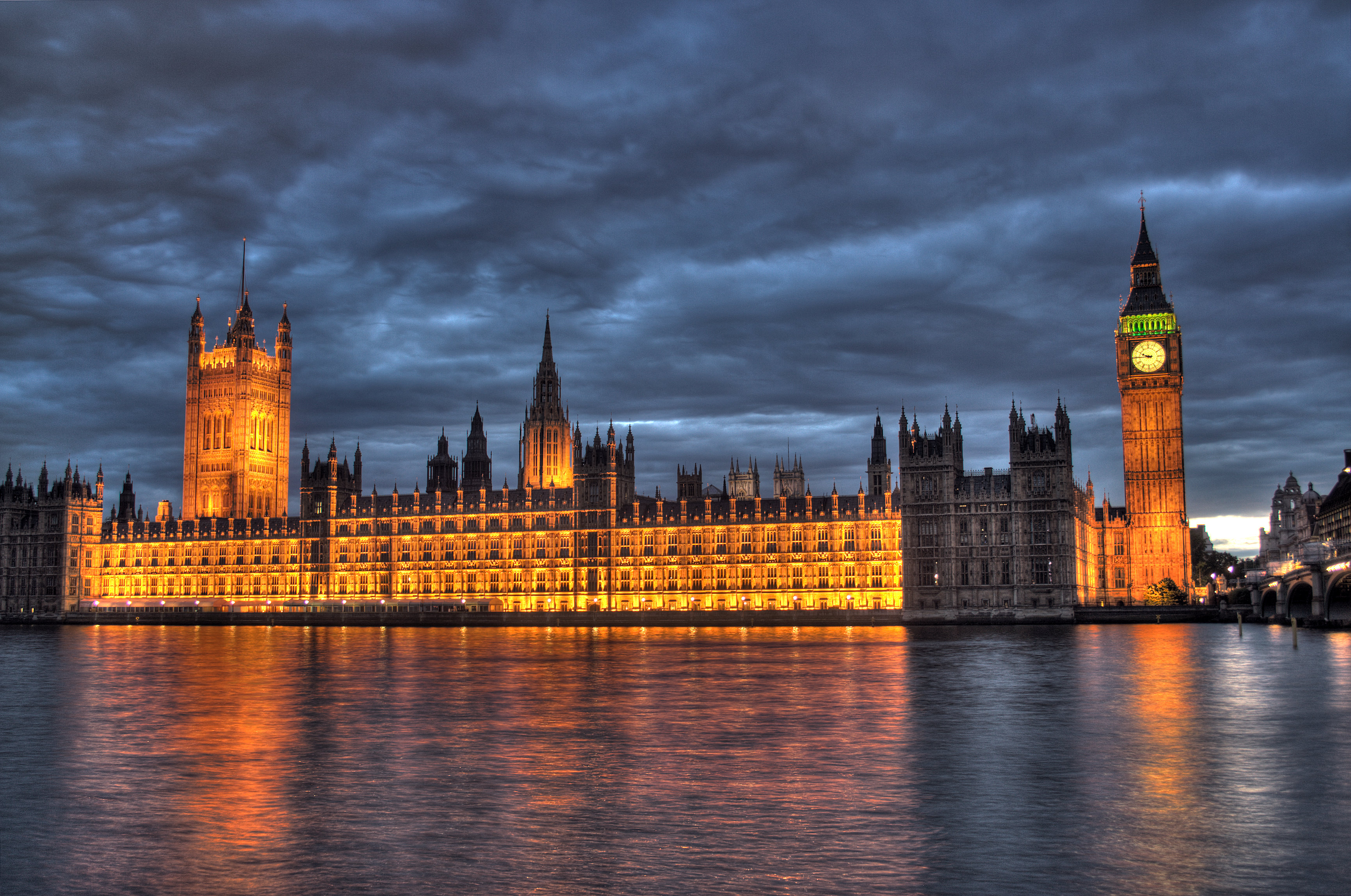








 I believe: This is a CoRRECT™ Video with a very positive message
I believe: This is a CoRRECT™ Video with a very positive message Walang Natira: Gloc-9's MTV Rap about the OFW Phenomenon
Walang Natira: Gloc-9's MTV Rap about the OFW Phenomenon
